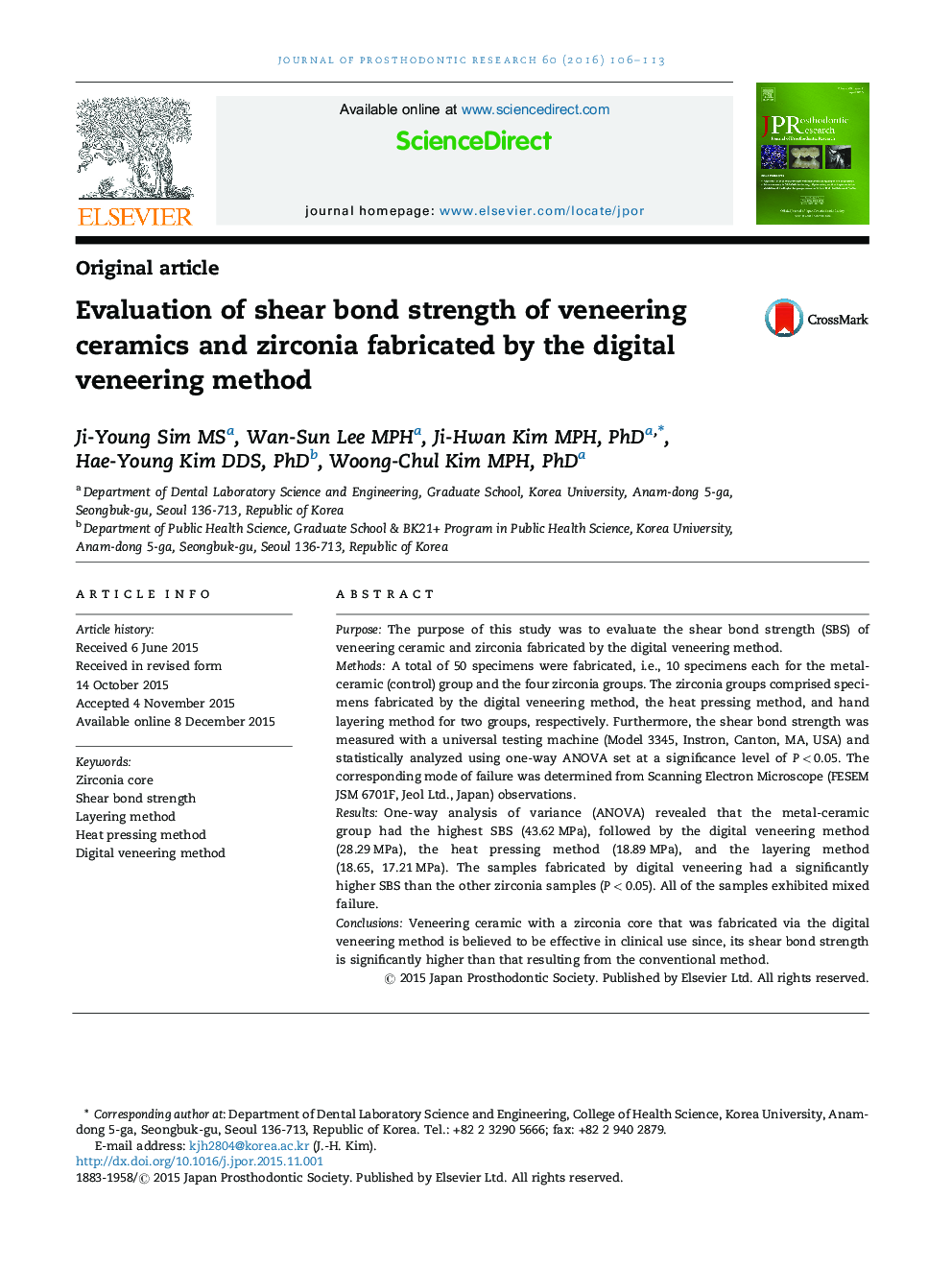| Article ID | Journal | Published Year | Pages | File Type |
|---|---|---|---|---|
| 3160641 | Journal of Prosthodontic Research | 2016 | 8 Pages |
PurposeThe purpose of this study was to evaluate the shear bond strength (SBS) of veneering ceramic and zirconia fabricated by the digital veneering method.MethodsA total of 50 specimens were fabricated, i.e., 10 specimens each for the metal-ceramic (control) group and the four zirconia groups. The zirconia groups comprised specimens fabricated by the digital veneering method, the heat pressing method, and hand layering method for two groups, respectively. Furthermore, the shear bond strength was measured with a universal testing machine (Model 3345, Instron, Canton, MA, USA) and statistically analyzed using one-way ANOVA set at a significance level of P < 0.05. The corresponding mode of failure was determined from Scanning Electron Microscope (FESEM JSM 6701F, Jeol Ltd., Japan) observations.ResultsOne-way analysis of variance (ANOVA) revealed that the metal-ceramic group had the highest SBS (43.62 MPa), followed by the digital veneering method (28.29 MPa), the heat pressing method (18.89 MPa), and the layering method (18.65, 17.21 MPa). The samples fabricated by digital veneering had a significantly higher SBS than the other zirconia samples (P < 0.05). All of the samples exhibited mixed failure.ConclusionsVeneering ceramic with a zirconia core that was fabricated via the digital veneering method is believed to be effective in clinical use since, its shear bond strength is significantly higher than that resulting from the conventional method.
